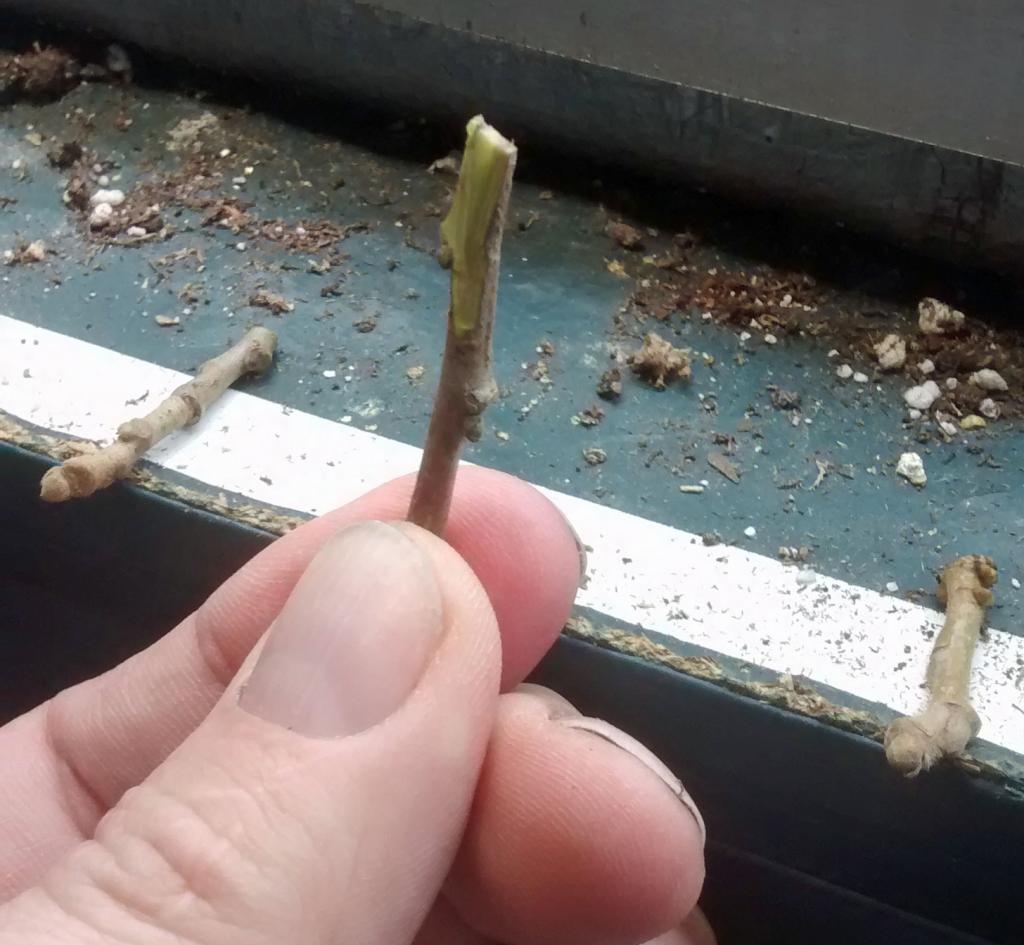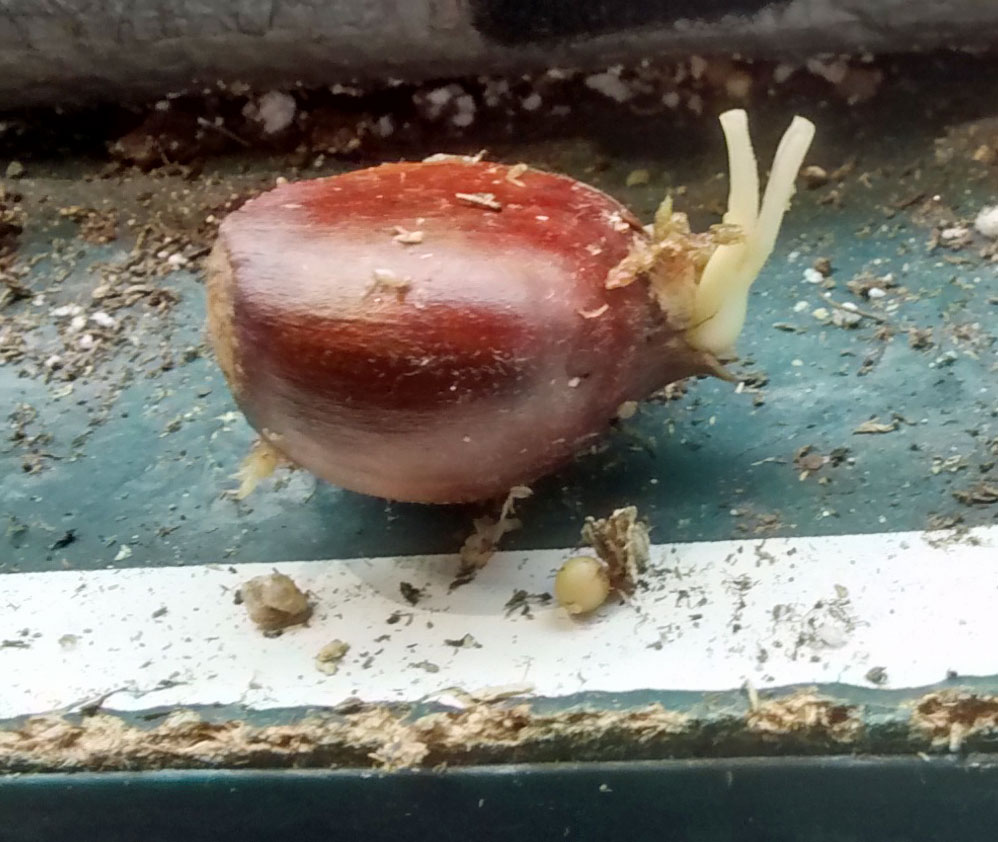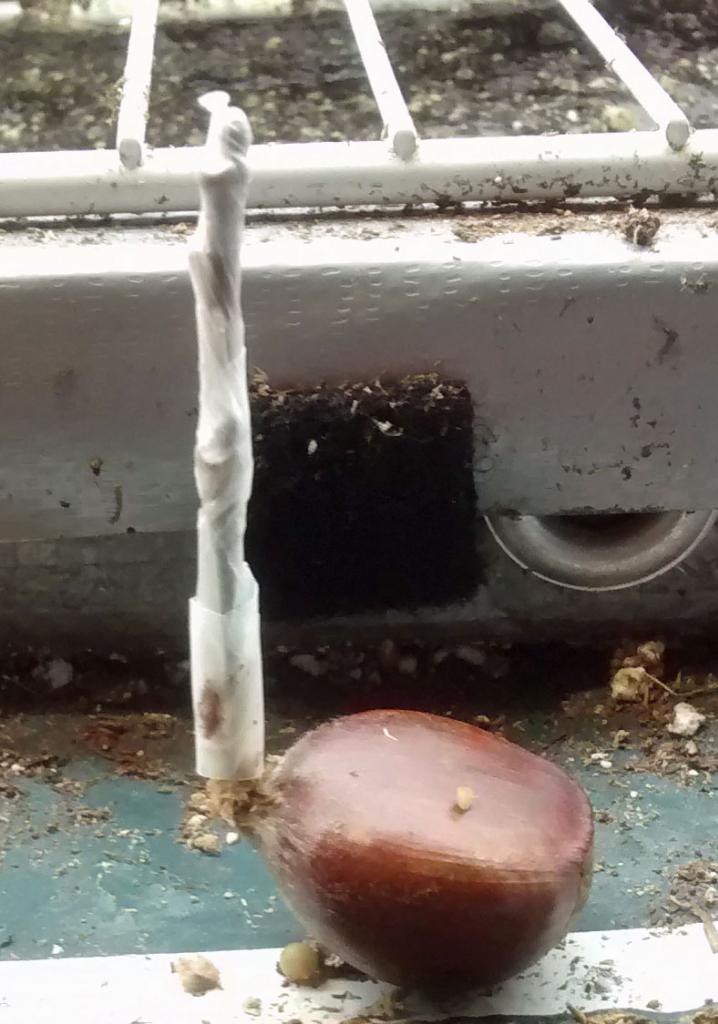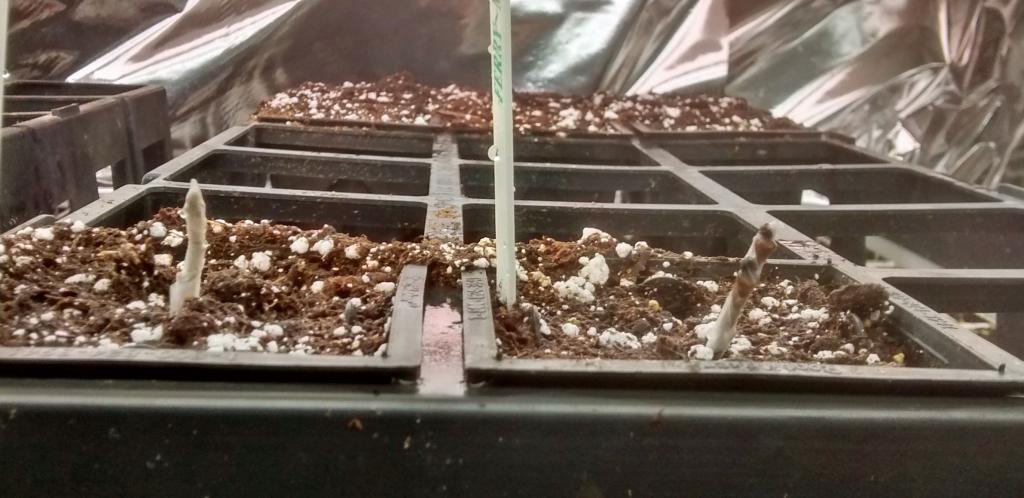yoderjac
5 year old buck +
I've done some reading and thought I'd give it a try. I didn't have much to work with, so I don't expect success. I'll be happy if I walk away with lessons learned.
Nuts and Scions:

The scion cut for wedge type graft after wrapping the top with Parafilm-M:

The tip of the root radicle is cut off and the radicle is split like you would for a wedge or cleft graft.

The next step I found to be the hardest part. You insert the scion into the root radicle and secure it with parafilm. Because there is no cambium in the root radicle, there is no alignment needed. You just need to scion cambium layer to contact the root radicle anywhere. You then invert the nut:

Continued...
I could only find a few scions small enough to try. Here are two completed. I may try 1 or two more:

I'm not expecting success on my first attempt, but I will report back if anything happens.
Thanks,
Jack
Interesting.. So are you taking a Chinese Chestnut and grafting Dunstan on to it?
I'm not sure what all combinations of nuts and scions are compatible. The nuts I used were Chinese. Some of the reading I did said there are incompatibilities depending on the varieties used. I'll probably try different combinations of nuts and scions over time. For now, I'm just working on technique.
I'm not happy with using parafilm to complete the bond between scion and radicle. You just can't put the pressure on a root radicle you can on wood. I'm thinking of experimenting with saran wrap or something like that. I don't think you need lots of sustained pressure for this. Root radicle cells grow very fast. I'm guessing the bond will succeed or fail within days.
As for varieties, we say we are planting Dunstan chestnuts. In actuality, we are planting offspring of Dunstans unless we are buying trees that are actually grafted with original Dunstan scions. In general, we I, and most of us are doing, is getting trees highly related to Dunstan chestnuts.
So, I'm thinking that some of the "Dunstans" I plant over time will have different characteristics than others. I'd like to option clone trees I like. As I understand it, normal chestnut grafting is possible but not easy and that inverted radicle grafting has a higher compatibility rate.
I hope to find combinations of nuts and scion varieties that have high success rates.
Thanks,
Jack
Cool experiment. I haven't seen it done that way exactly, do you have any info on where you heard about it? I tried a similar technique last year that I believe is called nut grafting. Its similar to what you did except a the whole radical and a bit or the nut is cut off, and the scion wedge is inserted directly into the nut.
I know indianasam had some success doing this, I did not. I tried chinese scion into american nut. I don't think I got scions at the right time of year.
http://www.qdma.com/forums/showthread.php?t=58645
Quote:
==================================
Originally Posted by homegrownbucks
Cool experiment. I haven't seen it done that way exactly, do you have any info on where you heard about it? I tried a similar technique last year that I believe is called nut grafting. Its similar to what you did except a the whole radical and a bit or the nut is cut off, and the scion wedge is inserted directly into the nut.
I know indianasam had some success doing this, I did not. I tried chinese scion into american nut. I don't think I got scions at the right time of year.
http://www.qdma.com/forums/showthread.php?t=58645
==================================
I can't remember where I first heard about it. I know we have discussed it at least superficially on this forum. Here is one good article on it: <http://81.0.228.28/publicFiles/51339.pdf
I did some digging and found a few others but can't remember where.
Nut grafting is also a well proven technique. I followed that IndianSam thread closely and found it very interesting.
Thanks,
Jack
Now that was and interesting read, Yoder. Be fun to follow the results. I always like reading your threads on these type of things. Keep us posted.
Now I am excited to follow this thread. Can't wait to see some success.
good luck
todd
Is this graft superior to a graft made on a seedling tree?
And if you graft the root, what feeds the tree?
Nice to see someone trying and posting results. I plan on trying this with about 50 american chestnuts the amhurst, Adair and a ozark chinkapin. I have emailed a lady named Joyce I seen her article on this grafting method. If you need some more diameter let it grow out a shoot a few inches long then cut it off and graft into the radicle. She told me they could take a few weeks for them to take so don't give up on them too fast. She also told me it had a higher success rate than the nut grafting if inverted don't take it will send up a shoot that can be grafted later but nut grafting once that radicle is severed it's done if it don't take. This woman was very informative I think she was grafting american chestnuts in Canada. She also shared a potential way to get past the compatibility issues. Grow the chestnuts in a dark room with no light they should be white because they don't have sunlight to make chlorophyll. If you graft them in this state they shouldn't have compatibility issues for some reason. I will look up more in the emails I'm sure I left some out.
Thanks,
Daniel
Quote:
==================================
Originally Posted by Fish
Is this graft superior to a graft made on a seedling tree?
And if you graft the root, what feeds the tree?
==================================
I'm not sure what "superior" means. I think different grafting techniques have different advantages and disadvantages. The paper on the link talks about some different techniques.
Comparing the kinds of techniques in the article to more traditional grafting techniques, I would say the big advantage is quick failure. This isn't an issue with trees like persimmon, apple, and such that graft relatively easily. As I understand it, chestnuts have a fairly high failure rate with traditional techniques.
If I start a chestnut from the nut, it takes months of care and feeding until it is large enough to graft traditionally. All that is lost if the graft fails. I think the thing that the techniques have is a better timeline.
As far as the specific inverted radicle grafting technique goes, I think the chestnut still has a lot of energy when the root radicle is small like that. When you graft scion wood to the root radicle and invert and plant it. the nut starts to feed the scion wood. It also thinks the root radicle has been lost and it still has enough energy to produce another. Once the buds open up, it realizes it has top growth feeding it and does not send up a shoot.
At least that is my understanding.
Thanks,
Jack
Last edited:
